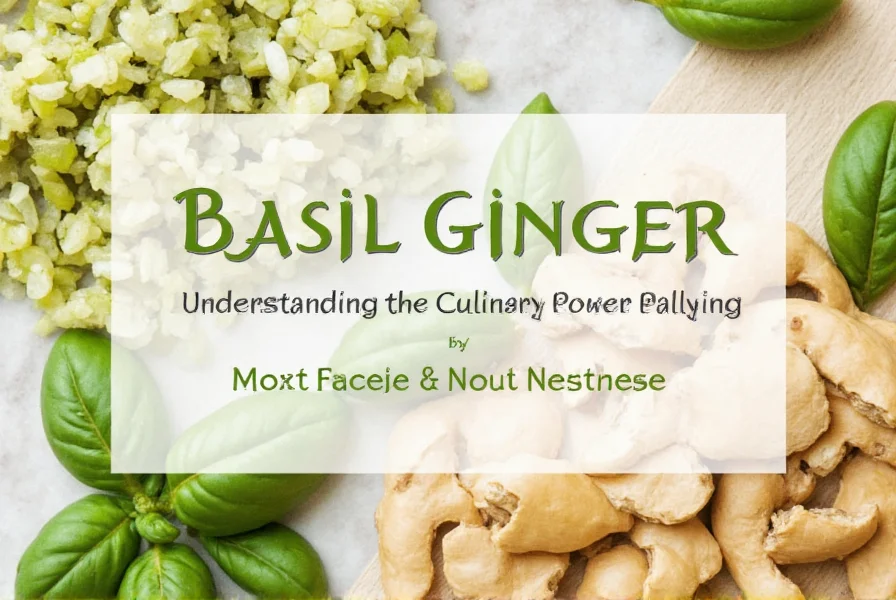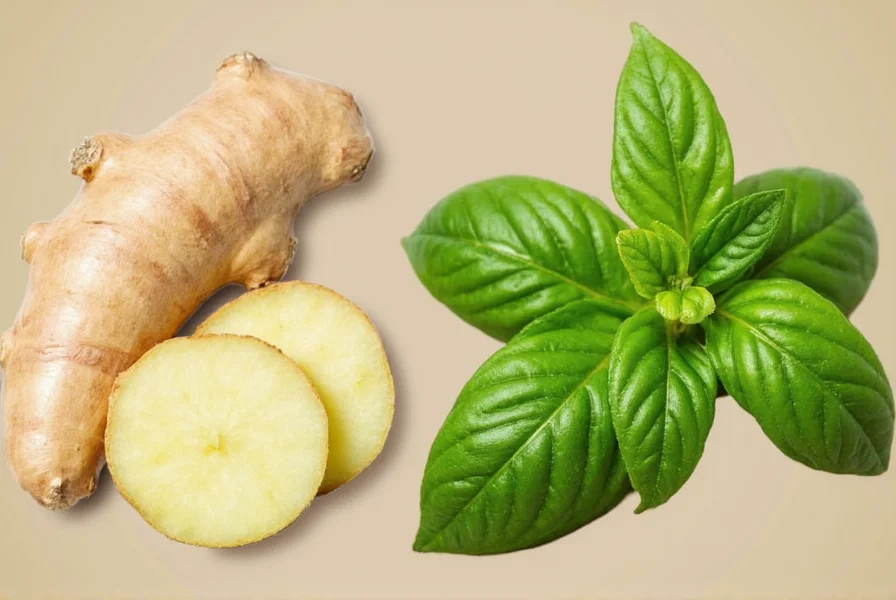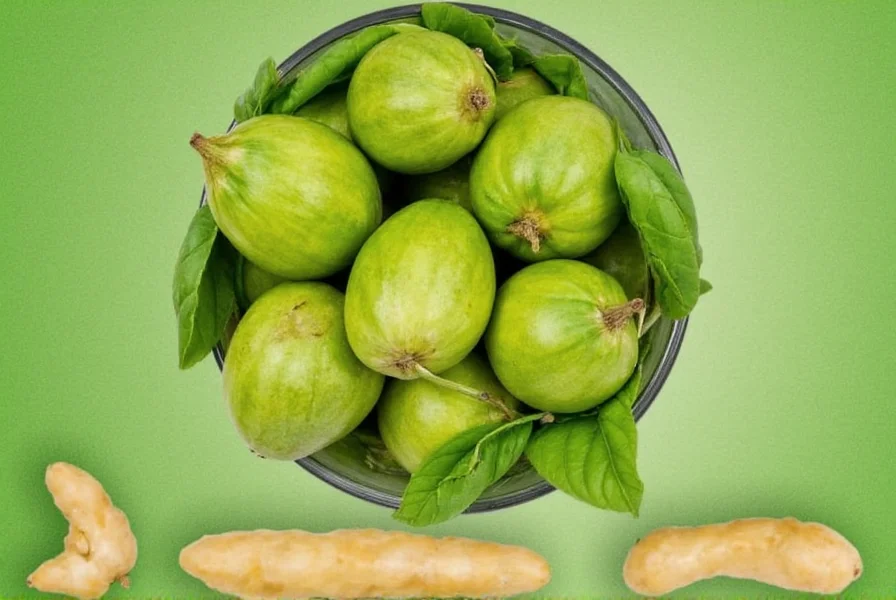Understanding Basil and Ginger as Complementary Ingredients
Many searchers encounter confusion when looking for “basil ginger,” expecting a single hybrid plant. In reality, basil and ginger are distinct botanicals that chefs and herbalists frequently combine for their complementary flavors and health properties. Sweet basil offers aromatic, slightly peppery notes with hints of anise, while ginger provides warm, spicy complexity. When used together, they create balanced flavor profiles suitable for both savory dishes and wellness beverages.
Nutritional Profiles of Basil and Ginger
Both ingredients deliver impressive nutritional benefits that multiply when combined. Basil contains high levels of vitamin K, antioxidants like eugenol, and anti-inflammatory compounds. Ginger’s active component, gingerol, provides potent anti-nausea and anti-inflammatory effects. Together, they form a powerful duo for supporting digestive health and immune function.
| Nutrient | Basil (100g) | Ginger (100g) |
|---|---|---|
| Vitamin K | 414.8 mcg (346% DV) | 0 mcg |
| Vitamin C | 18 mg (20% DV) | 5 mg (6% DV) |
| Iron | 3.17 mg (18% DV) | 0.6 mg (3% DV) |
| Key Compounds | Eugenol, Linalool | Gingerol, Shogaol |
Culinary Applications for Basil and Ginger Combinations
Chefs worldwide leverage the dynamic pairing of basil and ginger across multiple cuisines. In Southeast Asian cooking, this combination appears in Thai basil chicken and Vietnamese pho. Mediterranean chefs incorporate them into pesto variations and roasted vegetable glazes. The bright herbal notes of basil balance ginger’s heat, creating complex flavor layers that enhance both vegetarian and meat-based dishes.
For home cooks exploring using basil and ginger together in cooking, start with simple applications like adding freshly grated ginger to classic basil pesto. The ginger adds warmth that complements the pine nuts and Parmesan. Another approach involves infusing olive oil with both ingredients for dipping bread or dressing salads.

Health Benefits of the Basil-Ginger Combination
The health benefits of basil and ginger combination extend beyond flavor enhancement. Research indicates that consuming these ingredients together may amplify their individual therapeutic properties. Basil’s eugenol and ginger’s gingerol work synergistically to reduce inflammation markers more effectively than either compound alone.
Naturopaths frequently recommend basil ginger tea recipe preparations for digestive support. To prepare this simple remedy, steep 5-6 fresh basil leaves with 1/4 inch sliced ginger in hot water for 5-7 minutes. This infusion helps alleviate nausea, supports healthy digestion, and provides antioxidant protection. The combination also shows promise in preliminary studies for supporting respiratory health during seasonal changes.
Practical Recipe Applications
Integrating basil and ginger into daily meals requires minimal effort. Try these approaches:
- Immunity-Boosting Smoothie: Blend 1 cup spinach, 1/2 cup pineapple, 5 basil leaves, 1/4 inch ginger, 1 banana, and almond milk
- Asian-Inspired Dressing: Whisk 2 tbsp rice vinegar, 1 tbsp soy sauce, 1 tsp honey, 1 minced garlic clove, 1 tsp grated ginger, and 5 chopped basil leaves
- Roasted Vegetable Enhancer: Toss vegetables with olive oil, minced ginger, chopped basil, salt, and pepper before roasting
When developing how to combine basil and ginger in recipes, remember that fresh ingredients deliver superior flavor compared to dried versions. Add basil at the end of cooking to preserve its volatile oils, while ginger benefits from brief cooking to mellow its sharpness.

Storage and Preparation Tips
Proper storage maximizes the shelf life and potency of both ingredients. Keep fresh basil stems in a glass of water at room temperature (like flowers), covered loosely with a plastic bag in the refrigerator. Ginger root lasts up to three weeks when stored in a paper bag in the refrigerator’s crisper drawer. For longer storage, freeze peeled ginger and grate it directly into recipes.
When preparing these ingredients, always wash basil gently to avoid bruising the delicate leaves. Peel ginger using the edge of a spoon for minimal waste. The nutritional value of basil and ginger remains highest when consumed fresh rather than cooked for extended periods.
Frequently Asked Questions
Can I grow basil and ginger together in the same container?
While possible, it's not ideal. Basil requires full sun and well-draining soil with regular watering, while ginger prefers partial shade and consistently moist soil. Their different growing requirements make separate containers preferable for optimal growth.
What’s the best way to preserve basil and ginger for long-term use?
Freeze ginger after peeling (it grates easily frozen), and preserve basil by blending with olive oil and freezing in ice cube trays. This method maintains flavor compounds better than drying, which diminishes the volatile oils in both ingredients.
Are there any medication interactions to consider with basil and ginger?
Ginger may interact with blood thinners like warfarin due to its antiplatelet properties. Basil contains vitamin K which can also affect blood clotting. Consult your healthcare provider before consuming large medicinal amounts if you take anticoagulant medications.
How much basil and ginger should I use in tea for maximum benefits?
For a standard 8-ounce cup, use 5-6 fresh basil leaves and 1/4 inch of sliced ginger root. Steep for 5-7 minutes in water just below boiling point (195°F/90°C) to preserve active compounds without extracting bitterness.
Can children safely consume basil and ginger combinations?
Yes, in culinary amounts. For children under 2, consult a pediatrician before using ginger medicinally. The basil ginger health properties are generally safe when used as food ingredients, but medicinal doses require professional guidance for young children.











 浙公网安备
33010002000092号
浙公网安备
33010002000092号 浙B2-20120091-4
浙B2-20120091-4